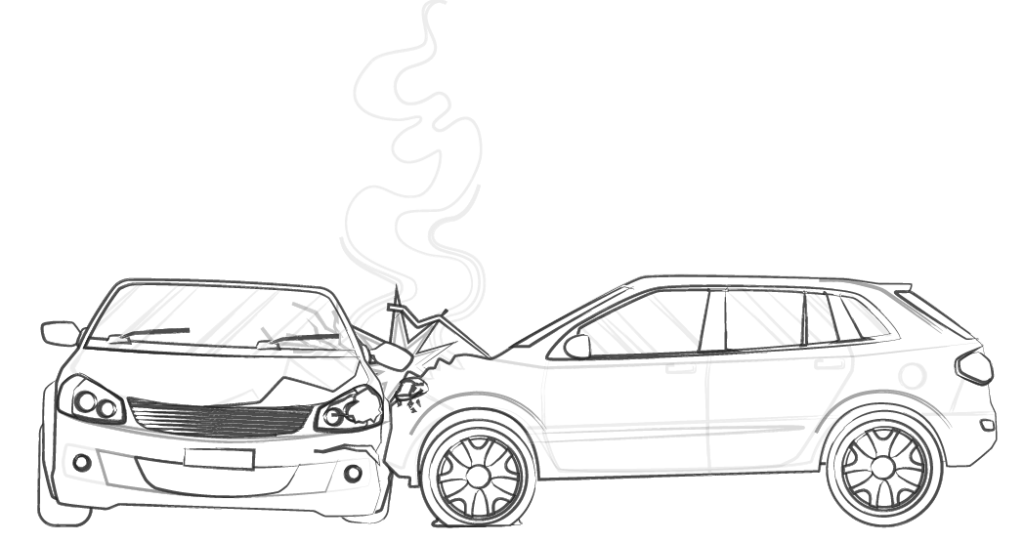Car accidents can be stressful and overwhelming experiences for anyone involved, and explaining the details of the accident under such circumstances can be challenging. Whether you are speaking with the police or your insurance company, it is essential to provide a clear, accurate, and consistent explanation of what happened. In this article, we will discuss some tips on how to explain a car accident and provide examples of how to communicate with the authorities and insurance companies.

When explaining a car accident, it is crucial to remain calm and composed. Take a few deep breaths and try to collect your thoughts before speaking. It is understandable to feel emotional or upset after an accident, but it is essential to stay focused and provide accurate information. How to explain a car accident can be simplified into 3 easy steps.
First, focus on being able to provide the basic details of the accident. This includes the time, date, and location of the accident. If possible, take note of any nearby landmarks or street signs that may help identify the location – mile markers, exits, nearby buildings, and neighborhoods are all relevant pieces of information that can help identify the location. If you have a smartphone or camera, take pictures of the accident scene, including any damage to the vehicles involved.
Next, you’ll need to provide an accurate picture of what happened, yourself. Describe what happened leading up to the accident. Explain the actions of both yourself and the other driver(s), being careful to avoid making assumptions about other parties involved. This may include details such as the speed of the vehicles, the direction of travel, and any traffic signals or signs. Be as specific as possible, and avoid assuming anything about the other driver’s actions.
Lastly, gathering the contact information of anyone involved in the accident is crucial, but if there were witnesses to the accident, try to obtain their contact information as well. The police or insurance company may want to speak with them to get a better understanding of what happened from an outside perspective. You may even ask the witnesses to provide a written statement of what they saw.
When speaking with the police, it is important to be cooperative and honest. Answer their questions to the best of your ability, but avoid volunteering information that they have not asked for. If you are unsure of the answer to a question, say so! It is always better to admit that you don’t know something than to provide false information and risk additional legal issues.
When speaking with your insurance company, be sure to provide all relevant information about the accident. This includes the details of the accident itself, as well as any injuries or damage to the vehicles. Remember to document everything; if you have any medical bills or receipts for repairs, provide them to your insurance company as soon as possible for reimbursement.
Here are some examples of how to explain a car accident to the police and insurance companies:
- Example 1: “On March 15th, I was driving north on Main Street when a car traveling south made a left turn in front of me. I didn’t have time to stop and collided with the other vehicle. The other driver claimed they didn’t see me coming and thought they had enough time to turn. I don’t believe they were paying attention to the road. There were no witnesses to the accident.”
- Example 2: “I was driving east on Oak Street and stopped at a red light at the intersection with Maple Avenue. When the light turned green, I proceeded through the intersection and was hit by a car that ran a red light on Maple Avenue. The other driver was going too fast and couldn’t stop in time. There were several witnesses to the accident who saw the other driver run the red light.”
- Example 3: “I was parked on the side of the road when another car backed into my vehicle. The other driver didn’t see me and didn’t look behind them before backing up. The damage to my car was significant, and I had to have it towed to a repair shop. The other driver admitted fault and provided their insurance information.”
In conclusion, how to explain a car accident can be a challenging experience, but it is essential to provide clear and accurate information to the authorities and insurance companies. In order to be best equipped for these situations, remember to remain calm and focused, provide basic details of the accident, describe what happened leading up to the accident, and offer any witness statements or evidence. By doing so, you can help ensure a smooth and fair resolution to the situation.
